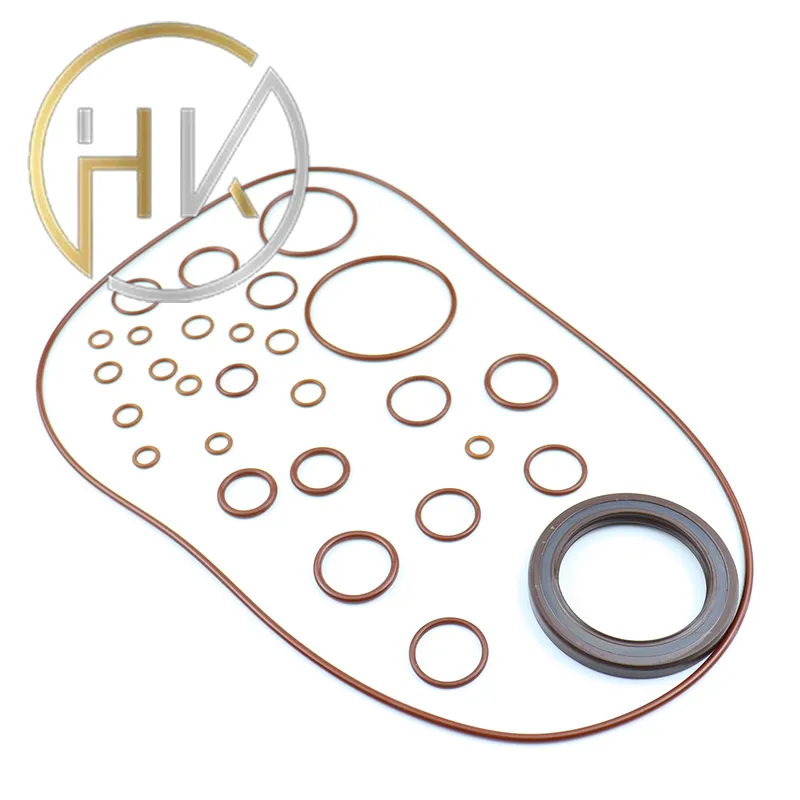नवम्बर . 10, 2024 13:56 Back to list
Specifications and Features of 35x47x7 Oil Seal for Improved Sealing Performance
Understanding the 35x47x7 Oil Seal A Comprehensive Guide
Oil seals are crucial components in various mechanical systems, serving as protective barriers to keep lubricants in and contaminants out. Among the many types of oil seals available in the market, the 35x47x7 oil seal stands out due to its specific dimensions and applications. This article delves into the significance, structure, materials, applications, and maintenance of the 35x47x7 oil seal.
Dimensions and Specifications
The designation 35x47x7 refers to the dimensions of the oil seal. The first number, 35, represents the inner diameter in millimeters, the second number, 47, signifies the outer diameter, and the last number, 7, indicates the thickness of the seal. These specific measurements make the 35x47x7 oil seal suitable for various applications where a precise fit is essential to maintain the integrity of the equipment.
Construction and Materials
Oil seals are generally composed of several materials, with rubber being the most common due to its excellent sealing properties and resistance to various fluids. The 35x47x7 oil seal is typically made from materials such as nitrile rubber (NBR), fluorocarbon rubber (FPM), or silicone, depending on the application requirements. NBR offers good resistance to petroleum-based oils and greases, making it ideal for most automotive and industrial applications. On the other hand, FPM provides superior performance in high-temperature and high-chemical environments.
The design of the oil seal includes a lip that creates a tight fit against the shaft or housing, preventing leakage. The lip's design is crucial as it facilitates a smooth sealing action while minimizing friction, which contributes to the longevity of the component.
Applications
35x47x7 oil seal

The 35x47x7 oil seal is widely used in various industries, including automotive, manufacturing, and machinery. In automotive applications, these seals are commonly found in gearboxes, engines, and wheel bearings, where they help to retain lubricants and prevent the ingress of dirt and moisture. This not only protects the internal components but also ensures optimal performance and longevity of the equipment.
In the manufacturing sector, these oil seals are essential for equipment such as conveyor systems, hydraulic cylinders, and pneumatic systems. They play a vital role in maintaining pressure and preventing fluid leaks, which can lead to operational inefficiencies and increased maintenance costs.
Installation and Maintenance
Proper installation of the 35x47x7 oil seal is critical to its performance. It is advisable to clean the sealing surface thoroughly and ensure that there are no sharp edges that could damage the seal during installation. Using the right tools and techniques can help avoid common pitfalls that may compromise the seal's integrity.
Regular maintenance also plays a significant role in the longevity of oil seals. It is essential to monitor for signs of wear and tear, such as leaks or unusual noises, which may indicate that the seal is failing. If such issues arise, replacing the seal promptly can prevent further damage to the equipment.
Conclusion
The 35x47x7 oil seal is a small yet vital component in many mechanical systems, ensuring the reliability and efficiency of operations across various industries. Understanding its specifications, applications, and maintenance requirements can help users make informed decisions when selecting and replacing oil seals. By investing in quality seals and adhering to proper installation and maintenance practices, one can significantly enhance the performance and lifespan of their machinery, ultimately leading to increased productivity and reduced costs.
In summary, the significance of the 35x47x7 oil seal cannot be overstated; it is essential for maintaining the balance of lubrication and protection in mechanical systems. Whether in automotive applications or industrial machinery, this seal plays a pivotal role in ensuring smooth and efficient operation.
-
TCN Oil Seal Metal Ring Reinforcement for Heavy Machinery
NewsJul.25,2025
-
Rotary Lip Seal Spring-Loaded Design for High-Speed Applications
NewsJul.25,2025
-
Hydraulic Cylinder Seals Polyurethane Material for High-Impact Jobs
NewsJul.25,2025
-
High Pressure Oil Seal Polyurethane Coating Wear Resistance
NewsJul.25,2025
-
Dust Proof Seal Double Lip Design for Construction Equipment
NewsJul.25,2025
-
Hub Seal Polyurethane Wear Resistance in Agricultural Vehicles
NewsJul.25,2025
-
The Trans-formative Journey of Wheel Hub Oil Seals
NewsJun.06,2025
Products categories
















